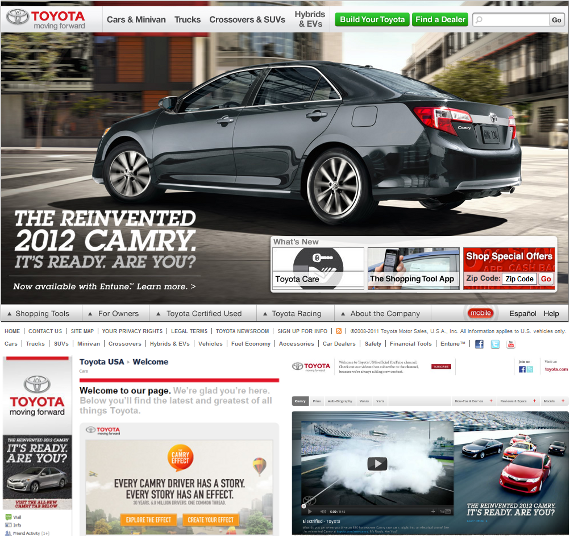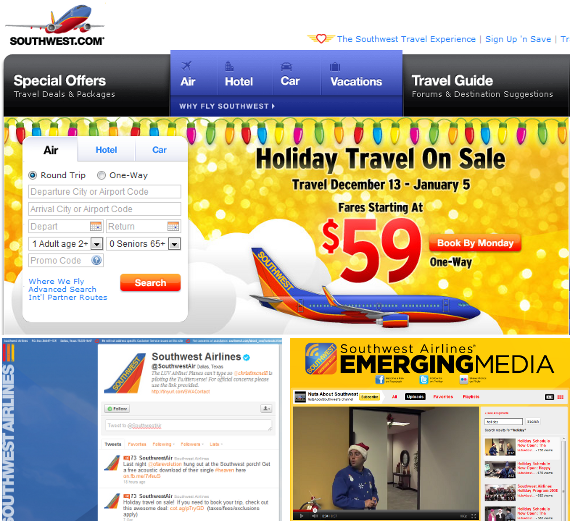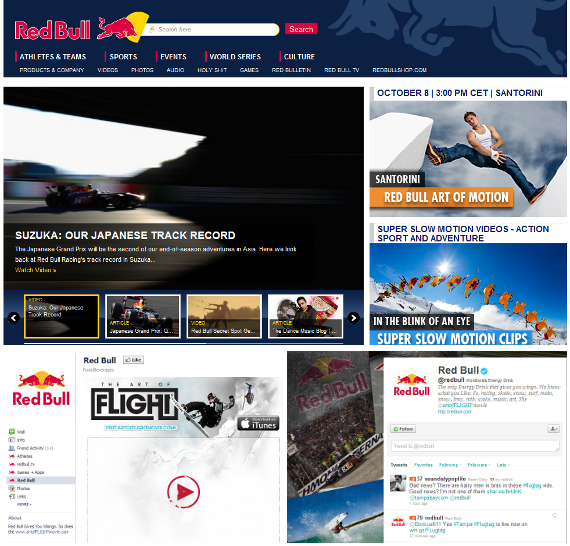In the first part of the Ultimate Guide to Online Branding, we focused on using blogging to build your online presence. Now, we will focus on the best avenues and tips for online branding and authority building with social media. When it comes to social media, you cannot just create profiles and be done with it. You have to streamline your profiles to match your website to promote brand synergy, and you have to interact with your audience to build industry authority. The following guide will help you to do both!
Create a Consistent Brand Image for Each Profile
Have you ever visited a company’s social profile, and you were not sure that it belonged to the company? One of the most important parts of branding is keeping a consistent image across all of your online properties so that no matter what path a person takes from one property to the next, they will always know it is your brand. For example, someone might:
- Find your fan page through a friend’s activity stream and then follow it to your blog, then website
- See a tweet from someone they are following, visit your Twitter profile, and then continue onto your website.
- Start at your website, then go to check out your social profiles to see if your company is engaging with fans (more on that later).
Just like you wouldn’t want pages on your website to be different themes, you will want your social profiles to do the same. Some great examples include:
Toyota
Toyota probably does the best with branding between their website, Facebook, and YouTube accounts as shown above. All three are branded with the moving forward logo, and whenever they are running a promotion, such as the current one on the Camry, you will notice that their social accounts also highlight the same promotion so you can feel the consistency moving from one property to the next.
Southwest Airlines
The above shows Southwest’s branding between their website, Twitter, and YouTube profiles. Each online property uses the same color scheme and is currently focused on holiday travel deals. Although the logos are a bit different, the patterns on each coordinate and still bring the brand together.
Redbull
Redbull’s branding between their website, Facebook, and Twitter profiles as shown above uses the same color scheme, logo, and focus on extreme sports.
Help People Find Your Profiles
I do a lot of competitive analysis in my line of work, and one of the most frustrating things I have to do is search for a brand’s social profiles. Don’t hide your social media presence – flaunt them! Be sure to:
- Put Social Icons on Your Website – Let visitors to your website know that you are engaging with your audience on social media as well by adding social icons to your website design. The most common places to place them include the header / menu bar, sidebar, and footer. They don’t have to be large and in charge – Toyota’s icons are only 17×17 pixels, and they get the job done!
- Put Social Links in Your Communications – Do you send emails regularly? Add social links to your email signature. Do you send newsletters? Add social icons to them.
- Make Your Profiles Search Friendly – If I Google your brand name + Twitter, I should get your Twitter handle in the search results. To make this happen, be sure that the name of your social profile (and the username if possible) matches your brand name. You might be tempted to keyword optimize your profiles instead of optimizing them for your brand name – this is something you need to resist. You can learn more about social media SEO on how to optimize for both effectively for search engines.
Get Engaged with Your Followers, Fans, and Subscribers
You probably know that it is important to maintain an active account by posting lots of updates, and that it is best to do something other than blasting advertisements non-stop about your brand. So the question is, what should you be doing to stay active in your social networks? Get engaged with your audience, of course. Here are the top networks to get socially engaged in for your brand.
Twitter Engagement
In the Twitter Marketing Guide, we covered everything from competitor research to Twitter chats. So there’s no need to rehash those topics. If you’re goal is to build a strong presence on Twitter and demonstrate your brand’s authority in your industry, you need get involved with your following. Some ways to do so include:
- Monitoring Brand Mentions – If you use Twitter itself, just do a search for your brand and save the search for future reference. If you use a Twitter management tool like HootSuite, create a keyword search column that will constantly update you with brand mentions. Anytime someone says something about your brand, whether it is good or bad, you should be responding to it if at all possible. This may mean adding some extra team members to your social media response staff. But over time, if people see that you are always on top of any discussion of your brand, you will gain trust and receive lots of great word of mouth marketing. People will tell their followers what a great response they’ve received from you and likely recommend you based on their satisfaction level.
- Monitoring Industry Conversation – One of the best parts of Twitter is that you can jump into any conversation, anytime. So if you are a company providing web analytics software, you can monitor anyone who talks about analytics, A/B testing, and other related topics and just answer simple questions that anyone asks about those topics demonstrating your expertise.
- Curate the Best Content – Even if you are the best content creator in your industry, people often like to see a second opinion. Find out who other authorities are in your industry and share their opinion on industry topics with your following. You will gain more relevant followers simply for sharing the best news.
Facebook Fan Page Engagement
There are several different ways you can engage with your fans using your fan page that will keep your current fans active and bring new fans to your brand. These include:
- Updating Your Fan Page on Facebook – It’s tempting to use HootSuite and other automated programs to update your fan page. But it’s becoming more and more obvious that if you want your updates to show up in fan’s news feeds that the updates must be organic, or originating from your fan page itself. So take the extra time to disable all of your autofeeds and start updating your fan page manually on Facebook. And when people start engaging with your posts or posting directly on your wall, be sure to respond to them. If they know they’re getting response, they’re more likely to return. No one likes a one-way broadcast.
- Try Out Different Types of Updates – Don’t just post links or ask questions. Spice it up – add some video updates and photos. Different types of people like different types of content – be sure to try to cater to everyone by mixing your content up!
- Thanks to the last major update to Facebook fan pages, you are able to use Facebook as your fan page. This means you can like pages as your fan page instead of your personal profile and then comment on them as your fan page. If you can find pages that are not direct competitors but whose audience will be interested in your brand, you will want to get active on them. For example, social media consultants should be living on Social Media Examiner’s fan page to connect with other individuals and businesses looking for social media help.
LinkedIn Engagement
If your brand isn’t on LinkedIn, you are missing out. LinkedIn allows you to add a company page where you can post your products, services, job openings, and even send status updates to your company followers including your latest blog posts. But some of the best branding and authority building activities for this network lie in the activity of the professional profiles including:
- Participating in Groups – There are lots of great, active groups on LinkedIn in a wide variety of industries. Find the groups that have your potential client base within them and start getting active in discussions and posting useful content. Just be sure not to do anything that the group moderator would consider as spamming!
- Answering Questions – The next best area to build a great professional reputation and strong authority in your industry is in LinkedIn Answers. There are questions asked every day in topics ranging from administration to technology. The people who answer the most questions are also featured on the answers’ home page as the week’s top experts!
- Gaining Recommendations – Last, but not least, is recommendations. You can get recommendations on both the company pages and the professional profiles of your employees. Imagine if someone is browsing your company’s page and sees that the top employees have a ton of recommendations. It will show that you have a lot of experts in the industry which will make potential clients even more confident in your brand!
Your Online Branding & Authority Building Strategy Using Social Media
What is your brand’s strategy when it comes to building your online presence and authority using social media? Be sure to share the networks and strategies that have brought the best results.
About the Author: Kristi Hines is a freelance writer, blogger, and social media enthusiast. Her blog Kikolani focuses on blog marketing, including social networking strategies and blogging tips.



Comments (15)